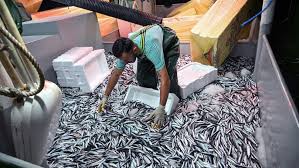Fisheries are common-pool resources, and many of the world’s fisheries are overexploited. At the same time, capture fisheries and aquaculture operations can impinge on public goods provided by marine ecosystems, such as marine biodiversity and unique habitats.
The common-pool and public goods dimensions of the marine environment justify regulation, but the issues frequently transcend national boundaries. Individual countries have few alternatives to protect the marine environment beyond their own jurisdictions.
The international nature of marine conservation thus provides an incentive for countries to use trade policy as an indirect means to protect the marine environment. Because a large share of the available seafood is being traded, trade restrictions can potentially lead to better resource protection and better fishing practices.
Read Also: Honey Bees: A Closer Look
Definition of International or Trans-boundary Waters
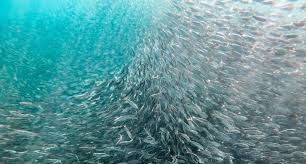
The terms international waters or trans-boundary waters apply where any of the following types of bodies of water (or their drainage basins) transcend international boundaries: oceans, large marine ecosystems, enclosed or semi-enclosed regional seas and estuaries, rivers, lakes, groundwater systems (aquifers), and wetlands.
Oceans, seas, and waters outside of national jurisdiction are also referred to as the high seas or, in Latin, mare liberum (meaning free seas).
Ships sailing the high seas are generally under the jurisdiction of the flag state; however, when a ship is involved in certain criminal acts, such as piracy, any nation can exercise jurisdiction under the doctrine of universal jurisdiction. International waters can be contrasted with internal waters, territorial waters, and exclusive economic zones.
Seafood Trade and Its Economic Implications
Seafood’s high degree of tradability suggests that trade policy as a means to promote marine conservation can have significant economic consequences.
Although seafood has long been traded internationally, trade has increased dramatically in recent decades, such that fish and fishery products now constitute the most highly traded food commodity internationally.
Many seafood markets have expanded from strictly regional to truly global markets. Freezing and storage technology, along with low transportation costs, have facilitated this globalization of the fish trade. The seafood trade is characterized by both high degrees of segmentation and market integration.
Segmentation results from the fact that there are many product types, most of which are not close substitutes for each other. Still, globalization has led to more integration of certain product types, such as the whitefish market, which includes species caught in multiple regions around the globe. The trend is toward further integration.
Another important consideration for the seafood trade is that production from capture fisheries has leveled off and even declined in some countries.
The increase in seafood trade is thus attributable to growth in aquaculture production and increased exports from developing countries. Developing countries, in turn, may be most affected by trade policies that restrict seafood imports failing to meet environmental standards.
Unique Features of Seafood Production and Their Impact on Trade
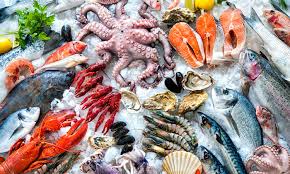
Two features of seafood production complicate the application of standard trade theory to seafood trade restrictions or liberalization. First, seafood production, whether from capture fisheries or aquaculture, has an unusually close connection to the environment.
In capture fisheries, producing fish directly feeds back on the ability of the environment to sustain fish production in the future. This feature distinguishes fisheries from most other natural resources. The higher degree of control with the production process in aquaculture makes aquaculture more like traditional industries.
Second, many fisheries are open access, an institutional arrangement in which fishermen cannot be excluded from fishing.
Open access (or management systems that do little to exclude access) is considered to be the root cause of overexploitation in fisheries, leading to economic waste from excess capacity and environmental harm through degradation of biological stocks and alteration of ecosystems.
Biological growth of a fish stock combined with open access or poor management systems can lead to a backward-bending supply curve for fish, along which the long-run supply of fish is less when prices increase.
This characteristic of open-access fisheries theoretically can lead to unconventional outcomes from trade liberalization, including the possibility that increased trade may not benefit both parties in the long run.
Read Also: How Do Honey Bees Reproduce
Management and Trade Liberalization in Fisheries
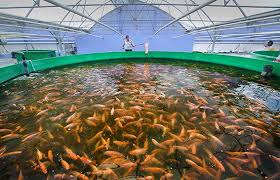
When a fishery is well managed, standard trade theory applies. Optimally or well-managed fisheries will typically operate on the conventional portion of the supply curve that is not backward-bending and also with a larger fish stock than under open access.
The literature on policy instruments to achieve optimal outcomes in fisheries focuses mostly on rights-based tools, such as individually transferable quotas, which break the non-excludability problem of open access.
A complementary literature on regulated open access suggests that biological stocks in many fisheries are maintained at safe levels through input controls and season closures, but failure to exclude access leads to economic losses.
Under trade liberalization, regulated open access may not lead to changes in the long-run supply of fish. There is still much debate about the effectiveness of different management types and the resulting impacts on biological and economic outcomes.
Variation in Fisheries Management and Its Impact on Trade Policies
The quality of management systems varies substantially across and within countries, from poor management systems close to open access to well-developed systems close to optimal management.
As a result, predicting the effects of trade restrictions or trade liberalization on fisheries must be done on a case-by-case basis. In addition, several fish stocks are subject to Illegal, Unregulated, and Unreported (IUU) fishing some in international waters and some within the jurisdictions of individual nations.
Fishing practices also differ substantially across countries, and in many developing countries and for industrial fleets fishing in international waters the overfishing problem is often exacerbated by subsidies. In contrast to other industries, such subsidies, while wasteful, are unlikely to convey long-run competitive advantages for subsidizing countries.
Role of Regional Fishery Management Organizations (RFMOs) in Fisheries Management
Many common-pool fisheries problems occur in international waters or involve straddling or shared fish stocks. Regional Fishery Management Organizations (RFMOs) work to establish multilateral agreements on fishing levels and practices and seek to enforce these agreements with the assistance of member countries.
In some cases, as with IUU fishing, trade restrictions can be the only way to regulate environmentally problematic practices. At the same time, such measures can also discriminate between countries, particularly disadvantaging developing countries with limited capacity to manage fish stocks or document management.
Fisheries Management and Their Influence on Trade
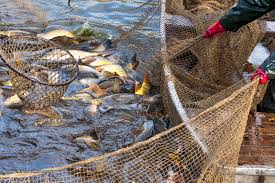
There is significant momentum in industrialized countries toward rights-based management of fisheries that break the non-excludability problem of open access.
There is also momentum toward more ecosystem-based management of the marine environment, which considers a broader set of issues, such as the spatial characteristics of fisheries.
These trends may influence the international fish trade, as they have the potential to alter production in capture fisheries and aquaculture operations, thereby affecting demand for imports.
Moreover, management trends may influence international environmental norms, which could lead to increased pressure for trade restrictions to promote marine conservation.
WTO Rules and Their Influence on Marine Conservation Efforts
Trade actions of individual countries or groups of countries have the potential to fall under the jurisdiction of, and possibly conflict with, a wide range of WTO rules, including sanitary and phytosanitary measures, anti-dumping, subsidies and countervailing measures, technical barriers to trade, and rules of origin.
Depending on how broadly the protection of human health and the environment is interpreted, efforts to promote marine conservation could lead to a proliferation of trade restrictions that are allowable under WTO rules.
Technological Advances and the Expansion of Seafood Trade
Seafood has been a traded commodity for thousands of years. From early on, the quantity traded was limited. A main reason for this was the perishability of seafood, and conserving fish (e.g., by producing dried fish) was time-consuming, costly, and often inefficient.
However, improved storage and preservation technologies, along with cheaper transportation, have dramatically increased fish trade over the last 30 years.
Do you have any questions, suggestions, or contributions? If so, please feel free to use the comment box below to share your thoughts. We also encourage you to kindly share this information with others who might benefit from it. Since we can’t reach everyone at once, we truly appreciate your help in spreading the word. Thank you so much for your support and for sharing!
Frequently Asked Questions
We will update this section soon.

